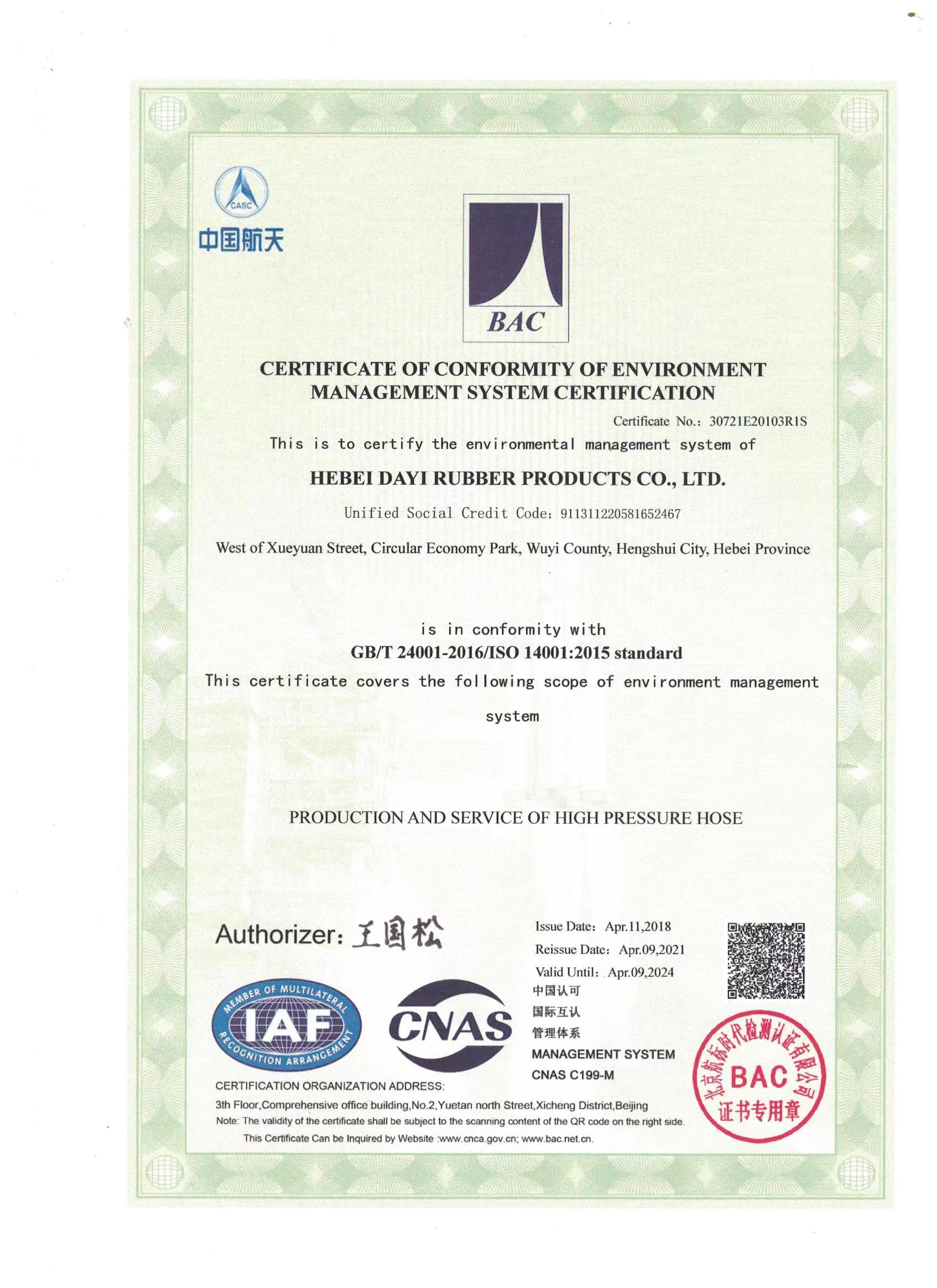335345435
Dec . 03, 2024 18:40 Back to list
oem hydraulic hose & fittings
Understanding OEM Hydraulic Hoses and Fittings A Comprehensive Overview
Hydraulic systems play a crucial role in various industries, delivering efficient power transmission through liquids. One of the critical components of these systems is the hydraulic hose and fittings, particularly those designed for Original Equipment Manufacturers (OEMs). This article delves into the importance, types, and selection criteria for OEM hydraulic hoses and fittings, as well as their applications.
What are OEM Hydraulic Hoses and Fittings?
OEM hydraulic hoses and fittings refer to components specifically manufactured to meet the standards and specifications set by original equipment manufacturers. These components are essential for ensuring that hydraulic systems operate effectively, safely, and efficiently. They are designed to withstand high pressures and offer durability under demanding conditions.
Why Choose OEM Hydraulic Hoses and Fittings?
1. Quality Assurance OEM parts are often tested and validated by the manufacturer, ensuring that they meet stringent quality standards. This is vital for maintaining the integrity of the entire hydraulic system.
2. Perfect Fit and Compatibility OEM hoses and fittings are designed to fit seamlessly into specific hydraulic systems. This compatibility reduces the risks of leaks and system failures.
3. Performance Reliability Using OEM components ensures that the hydraulic system operates as intended, providing consistent performance over time. This reliability is crucial in applications where uptime is essential.
4. Warranty and Support OEM parts typically come with an extended warranty and customer support, giving you peace of mind in case of any issues.
Types of OEM Hydraulic Hoses and Fittings
1. Hydraulic Hoses These are flexible tubes designed to carry hydraulic fluid under pressure. They come in various types, including - Wire-Braided Hoses Best for high-pressure applications, these hoses have multiple layers of wire braiding for added strength. - Spiral Hoses Used in extremely high-pressure scenarios, spiral hoses can withstand greater pressures compared to braided hoses. - Thermoplastic Hoses Lightweight and flexible, these hoses are ideal for applications requiring mobility.
oem hydraulic hose & fittings

2. Fittings Fittings connect hoses to various components within the hydraulic system. Common types include - Compression Fittings Easy to install and provide a tight seal, these are often used in low-pressure applications. - Luer Fittings Suitable for smaller-scale hydraulic connections, commonly used in medical and laboratory settings. - Flared Fittings These fittings provide a strong connection and are used in high-pressure environments.
Selecting the Right OEM Hydraulic Hoses and Fittings
Choosing the right OEM hydraulic hoses and fittings involves considering various factors
1. Application Requirements Assess the specific requirements of your hydraulic system, including the type of fluid, pressure, and temperature ranges.
2. Material Compatibility Ensure that the hose and fitting materials are compatible with the hydraulic fluid to prevent degradation.
3. Size and Dimensions Select hoses and fittings that match the dimensions and specifications of your system for optimal performance.
4. Pressure Ratings Always choose hoses and fittings with pressure ratings that exceed the maximum working pressure of your system.
5. Environmental Factors Consider the operating environment, including factors like exposure to harsh chemicals, UV rays, and fluctuating temperatures.
Conclusion
OEM hydraulic hoses and fittings are vital components of hydraulic systems, ensuring efficiency, reliability, and safety. By choosing OEM parts, you are investing in quality and compatibility, which ultimately leads to enhanced system performance. Whether in industrial machinery, automotive applications, or construction equipment, understanding the significance of these components and their careful selection can make a substantial difference in operational success. Always consult with experts when choosing hydraulic components to ensure that you meet all necessary specifications and requirements for your unique applications.
-
SAE 100 R17 Black Smooth Cover Hydraulic Hose
NewsMar.07,2025
-
SAE 100 R17 Black Smooth Cover Hydraulic Hose
NewsMar.07,2025
-
SAE 100 R17 Black Smooth Cover Hydraulic Hose
NewsMar.07,2025
-
SAE 100 R17 Black Smooth Cover Hydraulic Hose
NewsMar.07,2025
-
SAE 100 R17 Black Smooth Cover Hydraulic Hose
NewsMar.07,2025
-
steel wire braided hydraulic hose
NewsMar.07,2025



